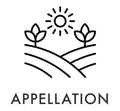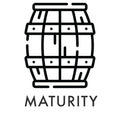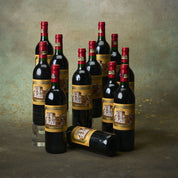Chateau Ducru Beaucaillou St-Julien 1994 750ml










The 1994 Château Ducru-Beaucaillou is showing now an excellent maturity. It offers rich aromas of cassis, minerals, licorice, and floral notes. The wine is medium-bodied with a well-integrated structure, balanced tannins, and a smooth, spicy finish. Still vibrant and complex, this vintage is now at its peak and can be enjoyed over the next few years.
The Wine Advocate | RP 90
Published: Feb 28, 1997
Drink: 2004-2022
Ducru-Beaucaillou experienced an uncharacteristically shaky period between 1986 and 1990. The winemaking did not suffer, but the inconsistency from bottle to bottle (too many wines exhibited a musty, wet cardboard-like aroma), is history. The construction of a new cellar and replacement of every barrel has guaranteed the conditions necessary to produce trouble free wines. Ducru is on a roll, with fine efforts over recent vintages, including an exceptional 1994, spectacular 1995, and what looks to be an equally profound, super-concentrated 1996. A top-notch effort in this vintage, Ducru-Beaucaillou's 1994 displays a dark purple color, a textbook, cassis, mineral, licorice, and floral-scented nose, medium body, outstanding extract and purity, moderate tannin, and a persuasively rich, sweet, spicy finish. Everything is well-integrated (including the tannin). This should prove to be a classic St.-Julien. Anticipated maturity: 2004-2022.
Chateau-ducru-beaucaillou.com
For 300 years, six families have nurtured an indelible bond with Château Ducru-Beaucaillou. They are forever captives of this prestigious estate, be they named Desjean, Bergeron, Ducru, Johnston, Desbarat, or Borie. Its families were never short of praise for it. Over the decades, this devotion has managed to overcome all that is accidental or fleeting, as if passion perfected Nature's opus.
Château Ducru-Beaucaillou owes its name to its "beautiful pebbles" ("beaux Cailloux", in French) that geologists refer to less romantically as Gunzian gravel. These quartz pebbles were deposited by the ancient Garonne at the beginning of the early Quaternary period, some two million years ago. It suffices to take a walk through the vineyards to make rich lithological finds. Lydian jasper from the Pyrenees, flint, quartz, agatoids... These Gunzian gravels make for soils that are poor in plant nutrients. But it is their very agrological paucity that guarantees the qualitative excellence of the wines. A choice of nature.
The result is in the glass. The allure is immediate. A soft, fruity attack on the palate, a voluptuousness underscored by perfectly integrated, silky tannins that culminate in an exceptionally lengthy finish. The aromas dance, flatter the nose, seduce the soul and penetrate the memory. A muse that arrives on tiptoe and leave a lasting, infinite souvenir.








